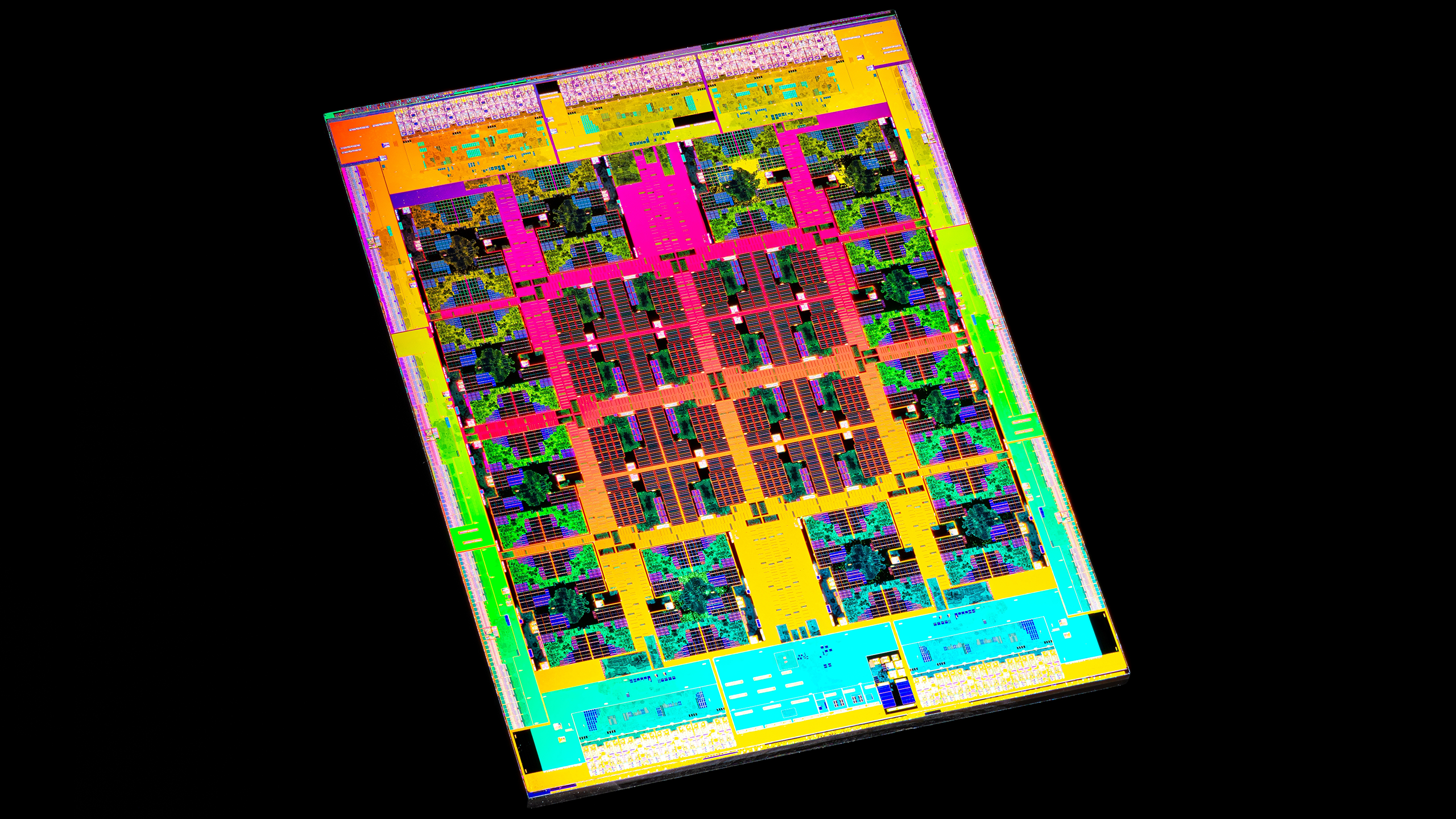
Russian 48-Core Baikal-S CPU Powers First Storage Device
A Russian company has introduced a motherboard for a storage system powered by Baikal Electronics’ 48-core processor, according to Cnews. There are several “nuances” with that system board though. First, it is based on a sample version of the Baikal-S processor that is not mass produced. Second, it is the only system that exists and it is unlikely that another one will ever be made. Third, it is made in such a way that it can barely be used. But let’s dive in to the details.
A Curious Motherboard
Eliptech, a company that used to be a part of Sber, one of Russia’s largest state-controlled bank and cloud service providers, has developed a motherboard based on the BE-S1000 server-grade system-on-chip featuring 48 Arm Cortex-A75 cores at 2.50 GHz at 120W. The SoC has six 72-bit memory interfaces supporting up to 768 GB of DDR4-3200 ECC memory in total (i.e., 128GB per channel), five PCIe 4.0 x16 (4×4) interfaces, one USB 2.0 controller, two 1GbE interfaces, and various general purpose I/O. While on paper this thing may look good, it will hardly ever enter our list of best CPUs for workstations.
Given the rather rich input / output capabilities of the Baikal BE-S1000 SoC, Eliptech’s ET113-MB motherboard can support a rather vast set of storage devices. We are talking about two PCIe 4.0 x4 SSDs as well as multiple SATA hard drives or solid-state drives. The motherboard has four U.2 connectors, so there are some limitations to is expansion capabilities.

There Are Limitations
It looks like the motherboard comes in an SSI MEB form-factor, which means you can theoretically build both a server/storage system and workstation on its base, but when it comes to 3.5-inch or 2.5-inch drives, you are going to be limited to the number of bays that your case has.
Another limitation is that those three U.2 connectors for SSDs are located on the outskirt of the motherboard, which could limit their usage in the desktop space. As for SATA connectors (there are three of them), they indicate that L-shaped plugs will be used, which again suggests desktop usage.
Meanwhile, the motherboard has multiple slots for add-in-boards, only they are located in a way that most of add-in-cards will not install unless their brackets are removed. Meanwhile the motherboard has audio connectors, which again hints that it can be used to build desktop workstations. It is not exactly clear how a desktop workstation can be used without a graphics card though.
This brings us back to the alleged purpose of the platform, which is being the base of storage devices. For that applications, audio connectors are not needed at all. Yet, they can, at least in theory, use expansion cards without brackets. Then again, L-shaped SATA connectors are not exactly intended for rack/server form-factors.
How?
Which brings us back to the fact that this could be the only motherboard featuring the Baikal BE-S1000 processor. This SoC was supposed to be made by TSMC on its 16FFC fabrication technology. Yet, due to sanctions against Russia for its invasion in Ukraine, this CPU will never be shipped to Baikal Electronics. Russia’s own semiconductor production capabilities are limited to thick process technologies.
Given the fact that almost no chip can be shipped to Russia from Taiwan, a question that now arises is “How a16FFC-based Baikal BE-S1000 chip was obtained?” This question will perhaps remain unanswered.
Russia’s inability to supply proprietary hardware for its military tasks is well offset by its large-scale process to procure chips, as reported by Reuters back in December. The huge operation included Hong Kong and Turkey and what was discovered by the highly respected news agency is a tip of an iceberg to put it mildly.
Why?
Despite all sanctions, Russia is a huge nation (with 140+ million inhabitants) and a big economy that can pour in vast amounts of money in pretty much everything. It can barely fund an Nvidia H100-kind of chip, but for things like the BE-S1000, it has deep pockets. This is when new government-funded companies emerge.

